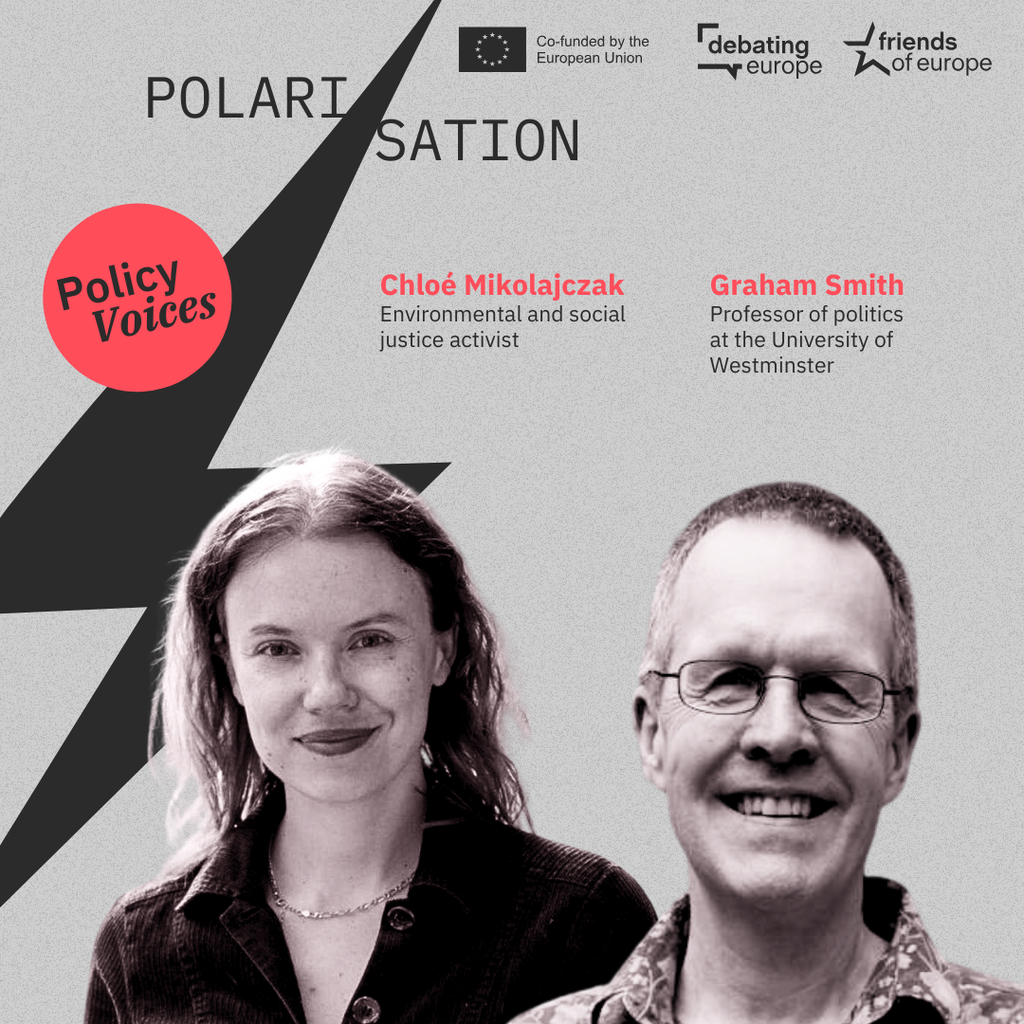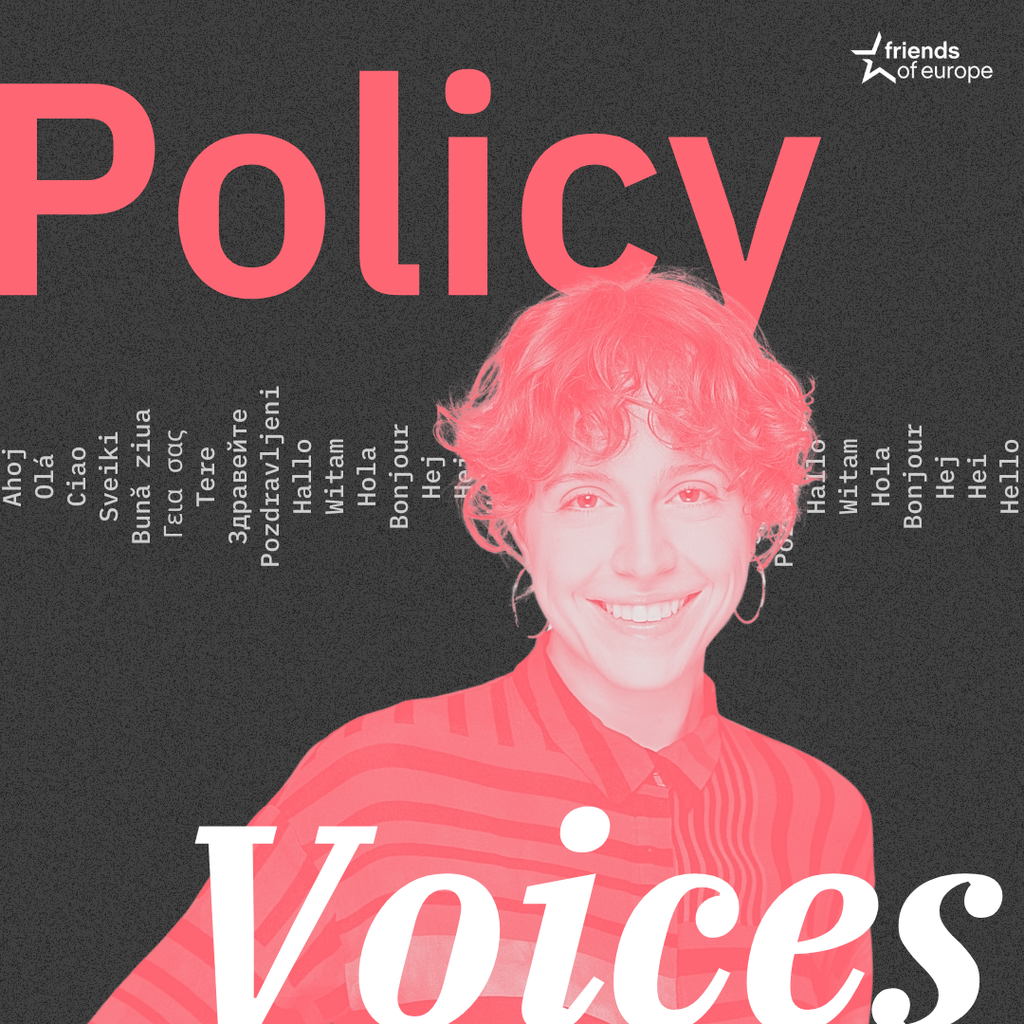
Summary
Reshaping cities to be greener and more sustainable is one of the more urgent responses needed to combat climate change in Europe and the rest of the world.
Buildings in urban areas account for 50% of emissions and energy consumption. Yet, most European cities lag far behind when it comes to the requirements for retrofitting and the construction of new urban environments to meet the United Nation’s Sustainable Development Goal 11 (SDG11) on sustainable cities and communities, the participants heard at Friends of Europe’s Green Week sessions on investing in greener cities and the role of citizens as drivers of change on 23 May 2018.
“The majority of buildings we will need to meet sustainability goals by 2050 have not even been built yet,” noted moderator Dharmendra Kanani, Director of Strategy at Friends of Europe. “There is an urgent need to address this.”
Beyond Europe, population growth in China, India, and Africa has created enormous pressure on cities and urban systems, with many cities in developing countries unprepared for the logistics of keeping up with projected growth in urban populations.
While some countries have sustainability agendas going back 40 years, many have only recently begun legislating sustainable and green approaches to urbanisation. “We are looking at better forms of urbanisation that are greener and more environmentally friendly,” underlined Raf Tuts, Director for Programme Division at UN HABITAT, noting that “a better urban future should also be a greener urban future.”
The main barriers to sustainable and green development are legislation, financing and human behaviour, noted Piero Pelizzaro, Chief Resilience Officer of Milan.
In order to achieve a greener urban future, sustainability agendas need to focus on both national and municipal levels to produce lasting change. National urban policies with green entry points need to integrate planning systems, legislation, and financing systems with broad local capacity for implementation.
Throughout the world, there is an increase of issues in development and environmental problems such as congestion and pollution. Any vision of a sustainable urban future must be decided and shared by cities through cross-national and intercontinental cooperation, noted Katarzyna Nawrot, Assistant Professor at the Poznan University of Economics, author of the ‘Rise of Megacities: Challenges, Opportunities and Unique Characteristics’, and European Young Leader (EYL40).
“Big cities will have much more capacity to address problems in sustainable development if they partner with each other across the world,” she said, adding that “it is essential that citizens be involved in these processes and be drivers for change.”
Connecting citizens with governments and policymakers has become easier in recent years with the advent of new technologies in communication and social media. Even so, these technological advances are struggling to cope with socio-economic divides and the darker elements of human behaviour, such as selfishness, individualism, and tribalism.
Overcoming economic and behavioural barriers means more efforts from local governments to reach out to their constituents and ensure that poor and disenfranchised citizens’ voices are heard.
About
Buildings in cities account for nearly 50% of the EU’s energy consumption and over a third of its CO2 emissions. Energy and emission savings in this sector are therefore vital to meet the EU’s climate and energy targets. Yet, the pace of renovation is extremely slow and the EU’s building stock remains relatively old. This debate aims at exploring the role of sustainable investments in accelerating the greening of cities.
This debate is taking place in the context of the 2018 European Commission Green Week: ‘Green cities for a greener future’
#EUGreenWeek
To register for this specific event, please visit the EU Green Week’s registration form and check Session 5.2 ‘Investing in a greener urban future: Towards sustainable housing and low-emission infrastructure’
IMAGE CREDIT: Bigstockphoto.com
Schedule
Buildings in cities account for nearly 50% of the EU’s energy consumption and over a third of its CO2 emissions. Energy and emission savings in this sector are therefore vital to meet the EU’s climate and energy targets. Yet, the pace of renovation is extremely slow and the EU’s building stock remains relatively old. The Sustainable Development Goals, with SDG11 focusing on Sustainable Cities, and the New Urban Agenda as well as the EU’s Energy Performance of Buildings Directive have highlighted the importance of investing in sustainable housing and resilient infrastructure, to meet the requirements regarding energy efficiency, nature-based solutions as well as to mitigate climate change, boost the economy and create job opportunities. These benefits represent great prospects not only for the future of cities and their infrastructure, whether in buildings or transportation, but also for the prosperity of their citizens.
- How can future-proof investments make the built environment low-emission, resource-efficient and resilient and what financial incentives should be encouraged?
- What training requirements are necessary for construction workers to enable this transition?
- How may better collaboration between the construction sector stakeholders ensure the full potential of energy savings in buildings to be achieved?
Speakers
James Drinkwater
Director of Europe Regional Network at the World Green Building Council
Judit Kimpian
Chair of the Architects Council of Europe’s Sustainability Group, Architects Council of Europe
Piero Pelizzaro
Chief Resilience Officer of Milan
Raf Tuts
Director for Programme Division at UN Habitat
Moderator
Dharmendra Kanani
Chief Operating Officer and Chief Spokesperson of Friends of Europe
Speakers

Director of Europe Regional Network at the World Green Building Council
James Drinkwater is the Director of World Green Building Council’s Europe Regional Network. He advises the network of over 25 Green Building Councils and their 5,000 member companies around Europe on European green building law and policy, and coordinates their work with governments and major partners, as well as WorldGBC’s global advocacy work. Drinkwater also co-leads BUILD UPON, the world’s largest collaborative project on building renovation which is funded through the EU Horizon 2020 project.

Chief Operating Officer and Chief Spokesperson of Friends of Europe
Prior to joining Friends of Europe, Dharmendra Kanani was director of policy at the European Foundation Centre (EFC). He was the England director at the Big Lottery Fund, the largest independent funder in the UK and fourth largest in the world. Dharmendra has held senior positions in the public and voluntary sectors and advisor to numerous ministerial policy initiatives across the UK.

Chair of the Architects Council of Europe’s Sustainability Group, Architects Council of Europe
Dr Judit Kimpian chairs the Architects Council of Europe’s (ACE) Sustainability Group. On behalf of over half-a-million EU architects, this group promotes better regulatory and financial incentives to significantly improve the resource efficiency and indoor environmental quality of buildings. She currently represents ACE in the Steering Committee set up by the European Commission. Kimpian was previously Director of Sustainable Architecture and Research at Aedas/AHR, where she led collaborative research projects addressing the gap between the expected and achieved performance of buildings.

Chief Resilience Officer of Milan
Piero Pelizzaro has a decade of experience in climate change policies and urban resilience planning. Currently he is the Milan Chief Resilience Officer and the City Lead for the H2020 Lighthouse project Sharing Cities at the Municipality of Milan. He is an advisor of the Italian Ministry of Environment Land and Sea on Urban Adaptation Policy to Climate Change. In recent years he was co-founded of Climalia, a specialised consulting company providing climate services in Italy, where he operated as Resilience Specialist.

Director for Programme Division at UN Habitat
Raf Tuts is Director of the Programme Division at UN-Habitat, where he oversees its seven thematic branches and four regional offices. His earlier assignments within UN-Habitat included Coordinator of the Urban Planning and Design Branch, focusing on promoting compact, integrated and connected cities that are inclusive and resilient to climate change. He was also Acting Coordinator of the Housing and Slum Upgrading Branch, Coordinator of the Cities and Climate Change Initiative and Chief of Training and Capacity Building Branch.
Partners
Coorganized with


Activities
Climate and Energy Summit 2025
Next event In person & livestreamed

- Area of Expertise
- Climate, Energy & Natural Resources
European Oceans Pact: is maritime transport on board?
Past event In person & livestreamed

- Area of Expertise
- Climate, Energy & Natural Resources
Staying the course: driving sustainability forward in a shifting…
Past event In person & livestreamed

- Area of Expertise
- Climate, Energy & Natural Resources
Navigating risks and enhancing resilience: charting Europe’s energy and…
Past event In person & Livestreamed

- Area of Expertise
- Climate, Energy & Natural Resources
Adaptation without mitigation is nonsense
- Category
- #CriticalThinking
- Author
- By Heïdi Sevestre
Policy Voices | Overcoming Polarisation: can communities shape the green…
- Category
- Podcast
- Area of Expertise
- Climate, Energy & Natural Resources
Energy prices coming down – is Europe on the right track?
- Category
- #CriticalThinking
- Author
- By Andris Piebalgs
Europe’s blackouts call for a NATO-level response
- Category
- #CriticalThinking
- Author
- By Maurizio Geri

- Area of Expertise
- Climate, Energy & Natural Resources

- Area of Expertise
- Climate, Energy & Natural Resources

- Area of Expertise
- Climate, Energy & Natural Resources

- Area of Expertise
- Climate, Energy & Natural Resources
Continue
the debate on
- Debating Europe
